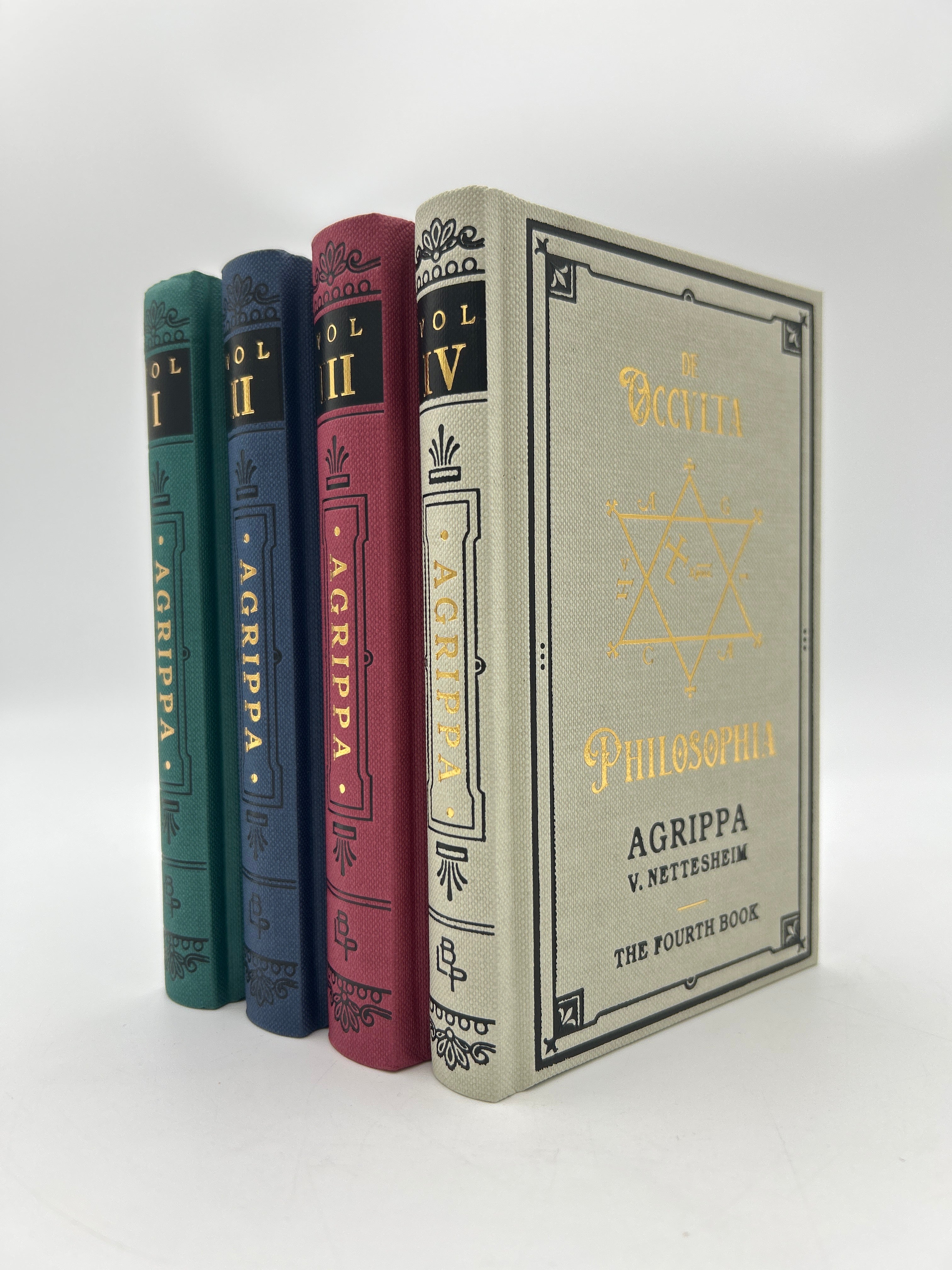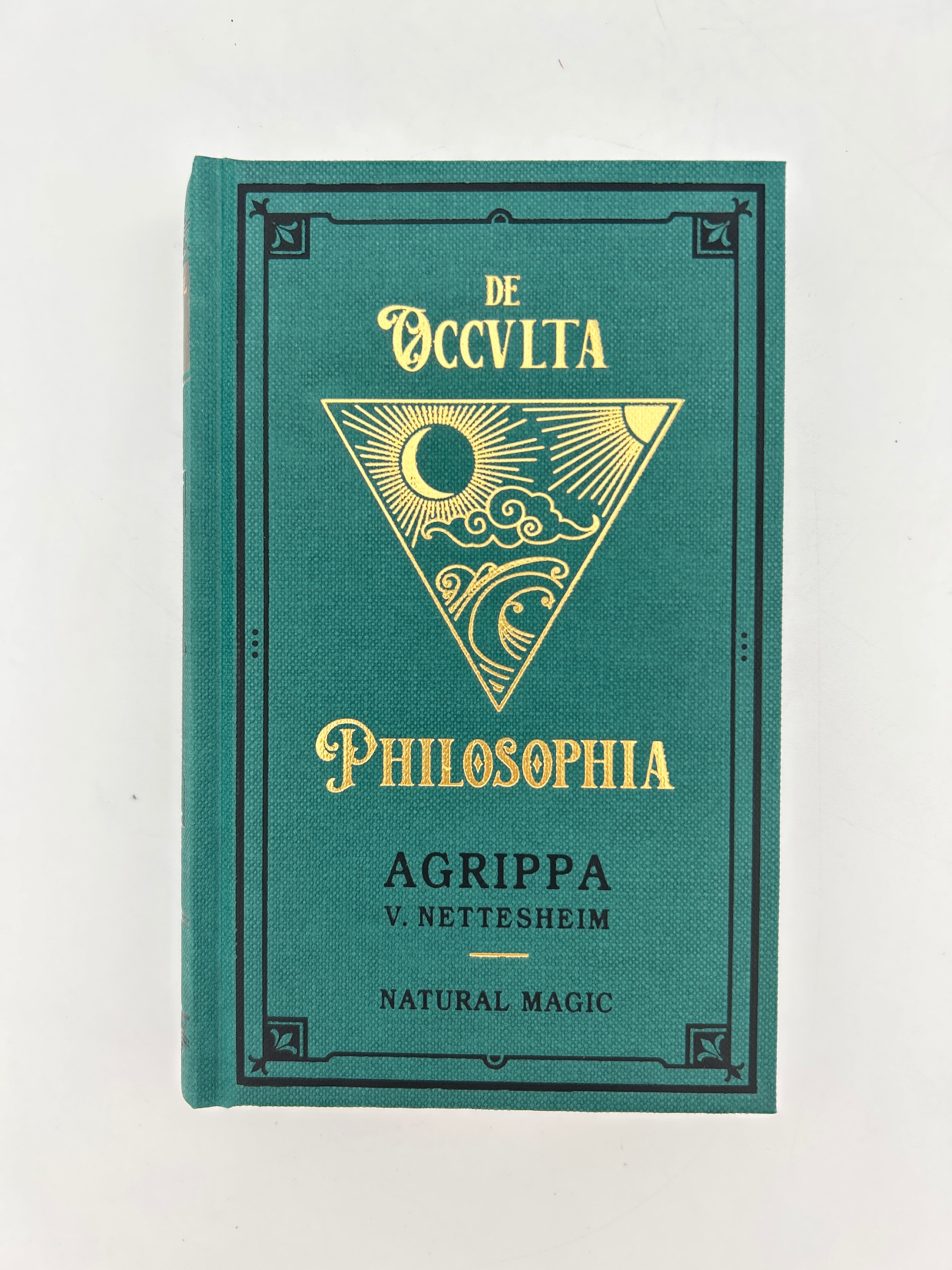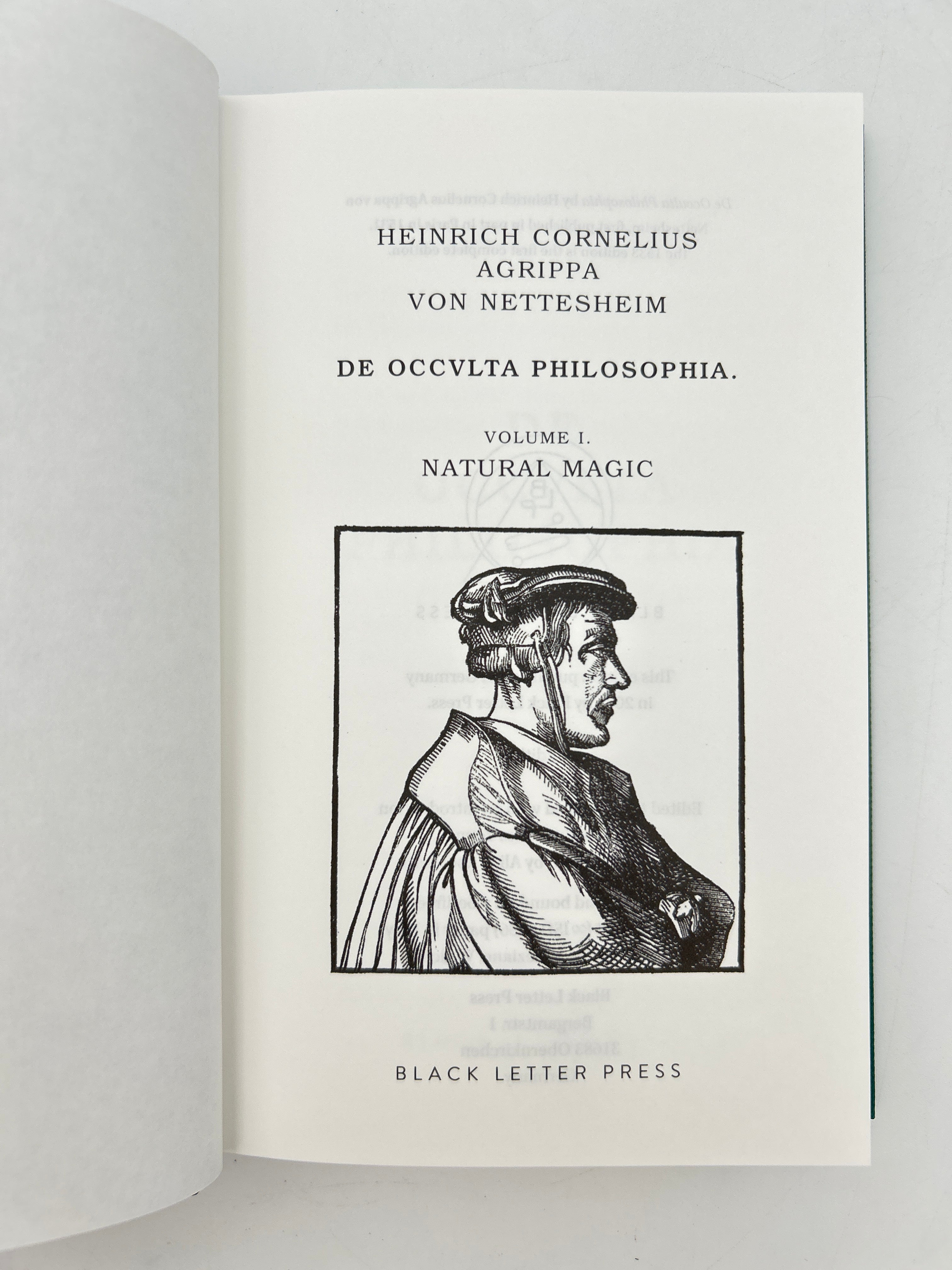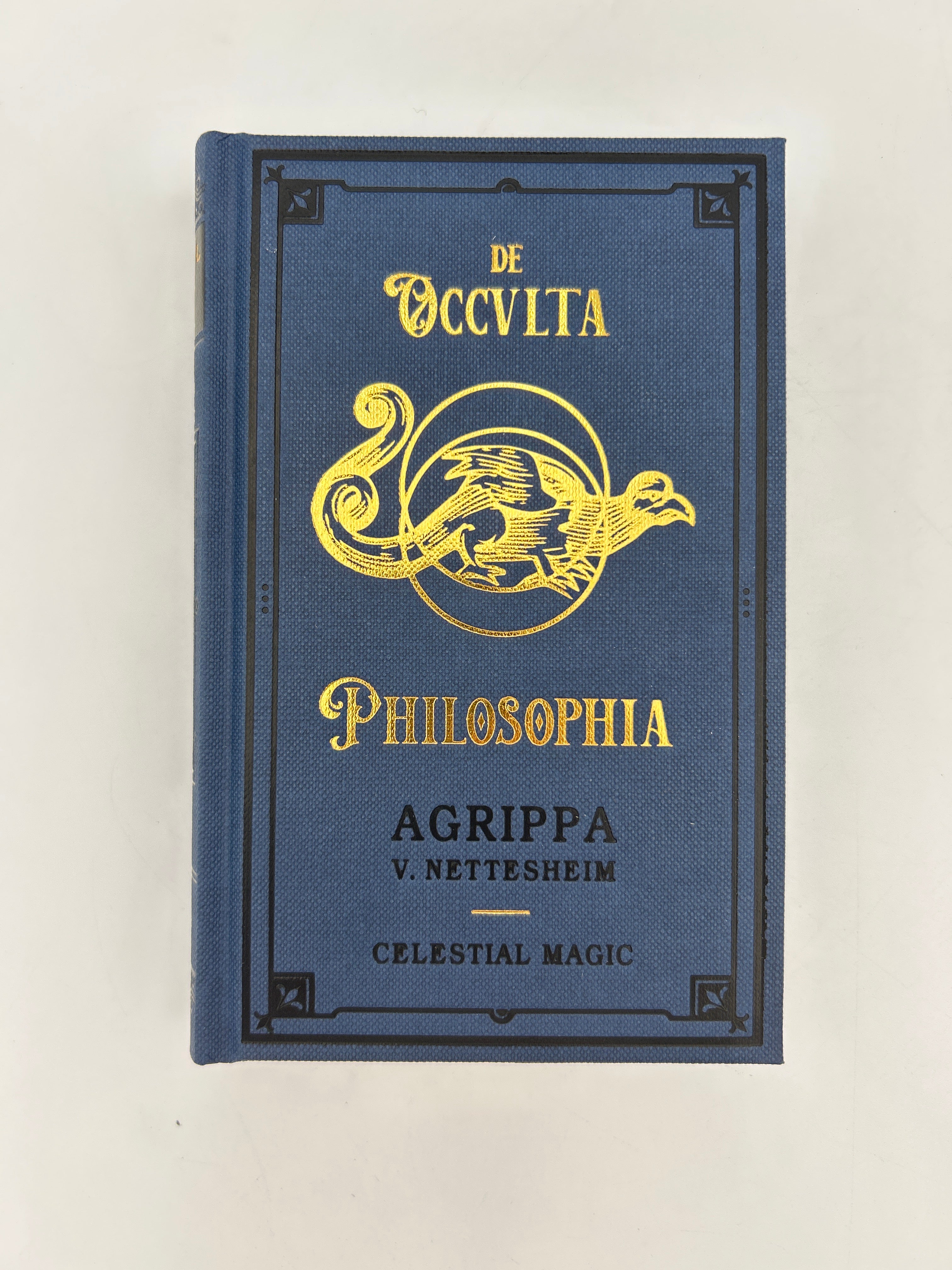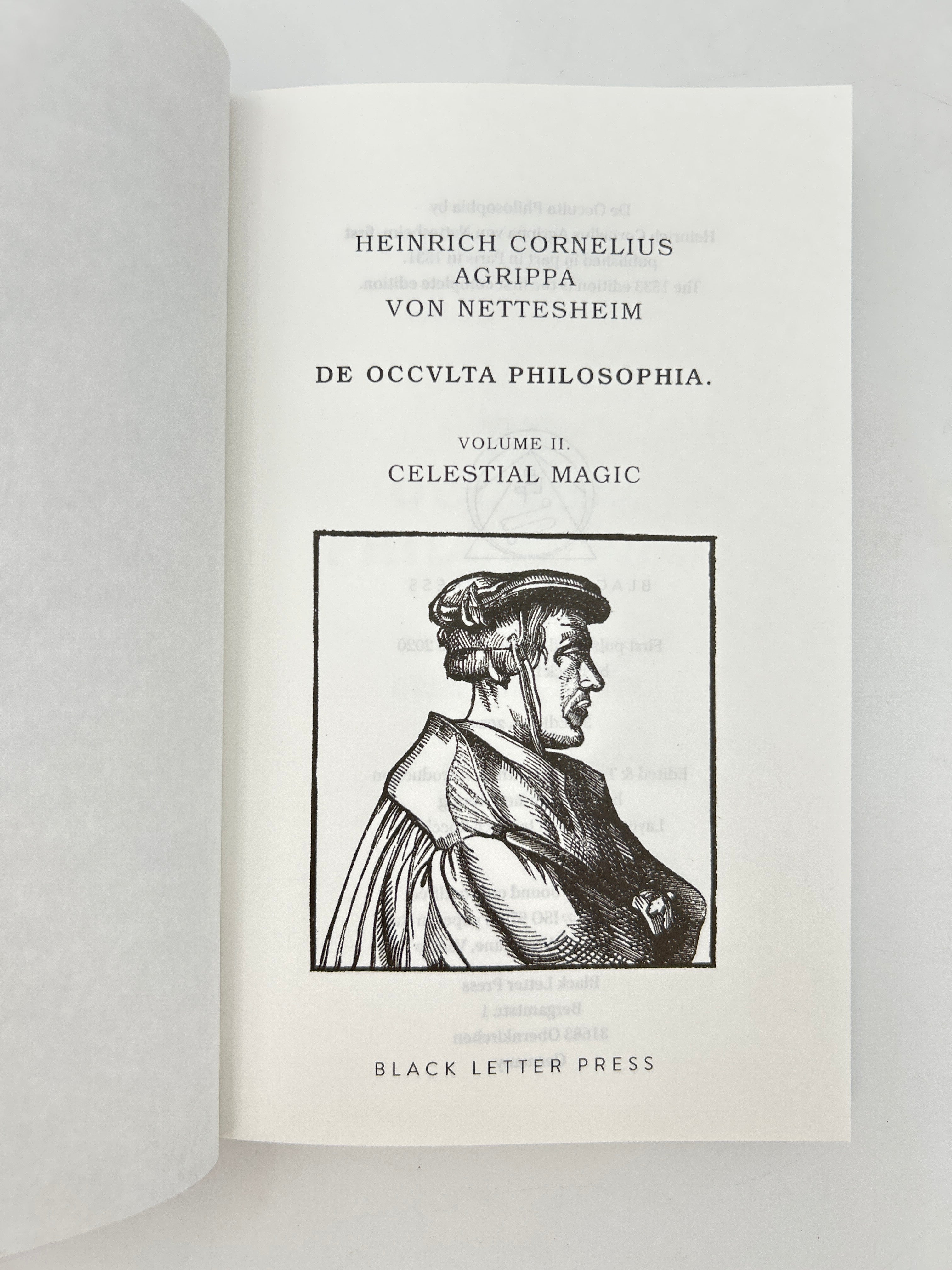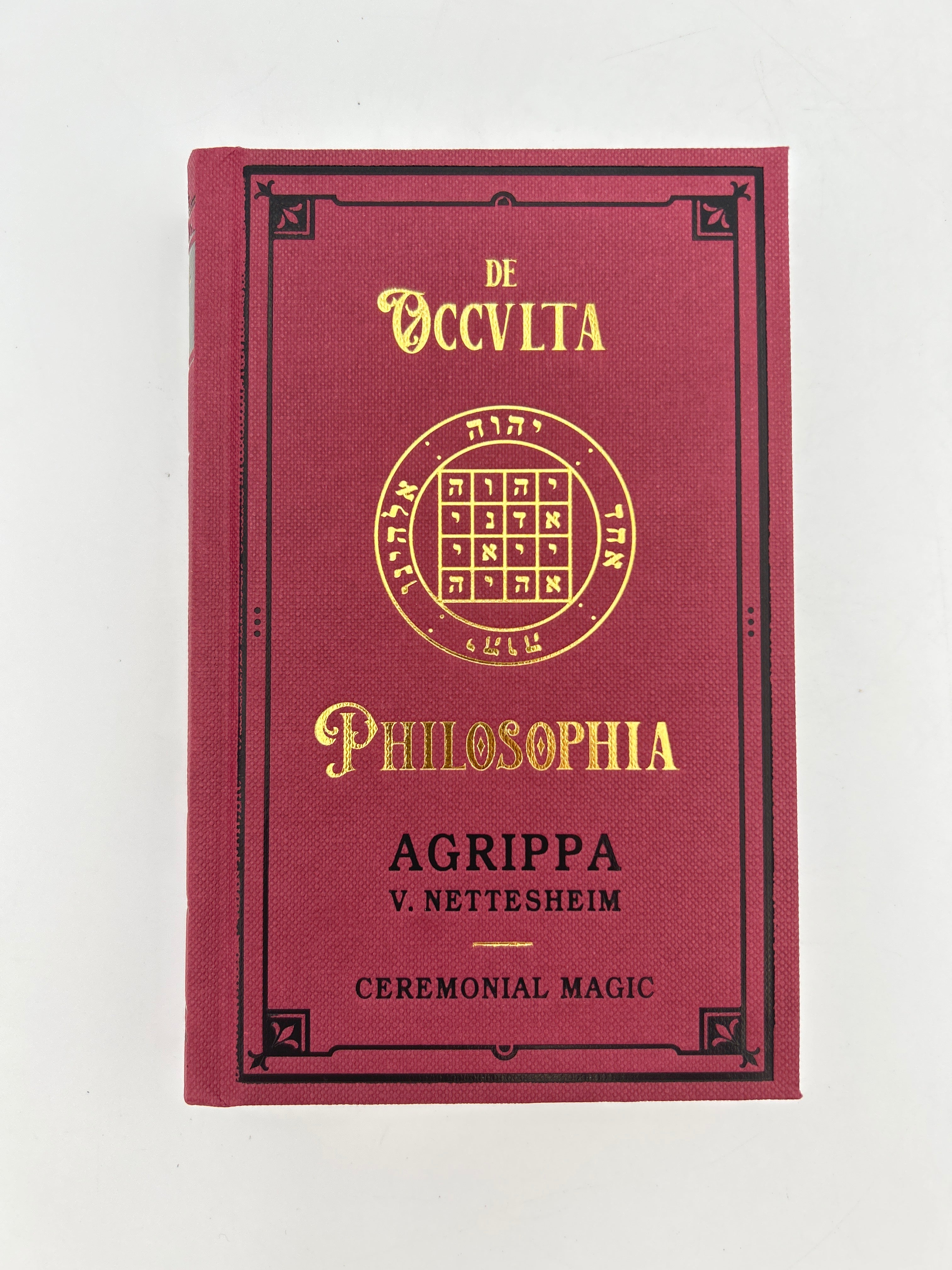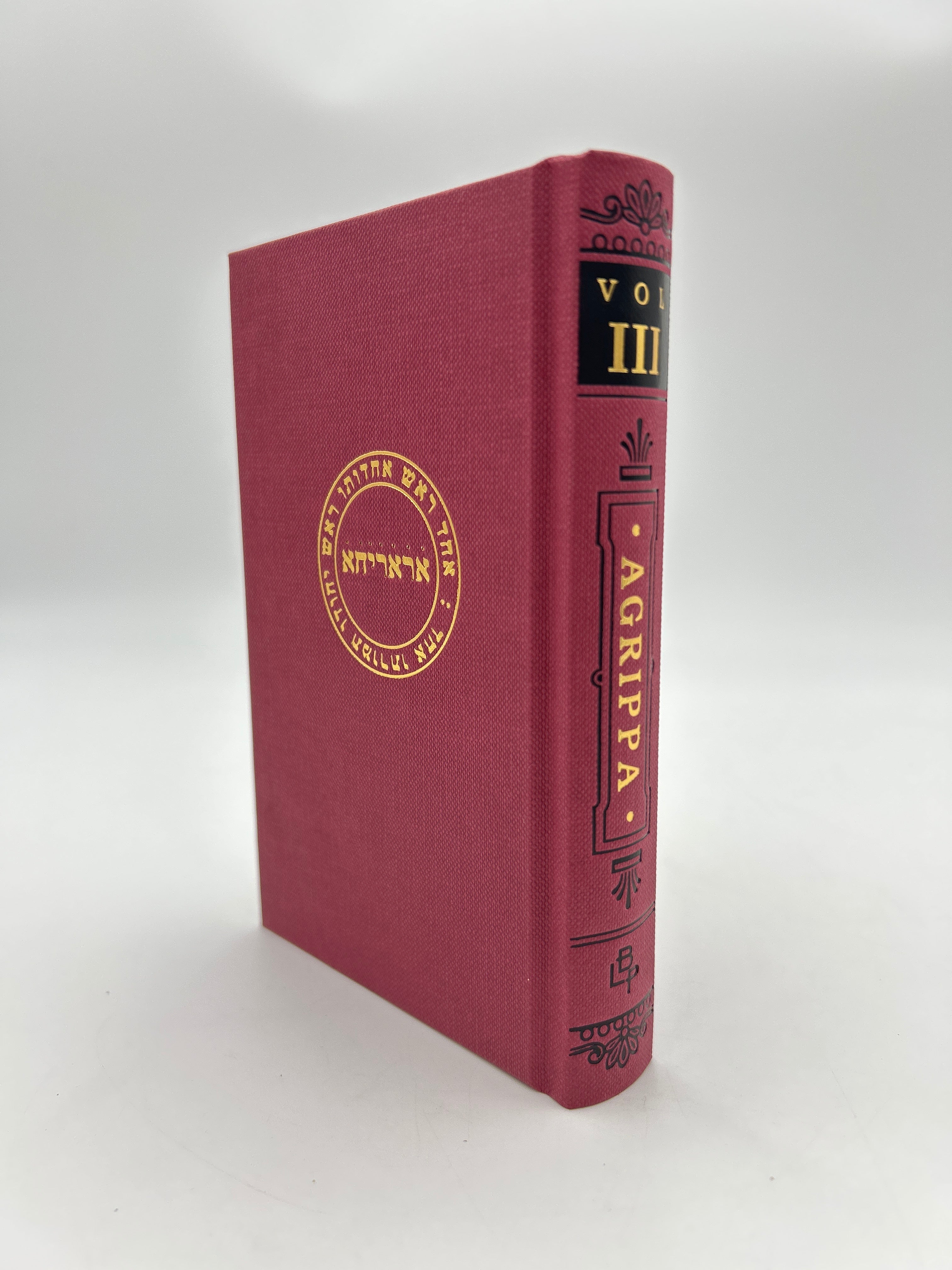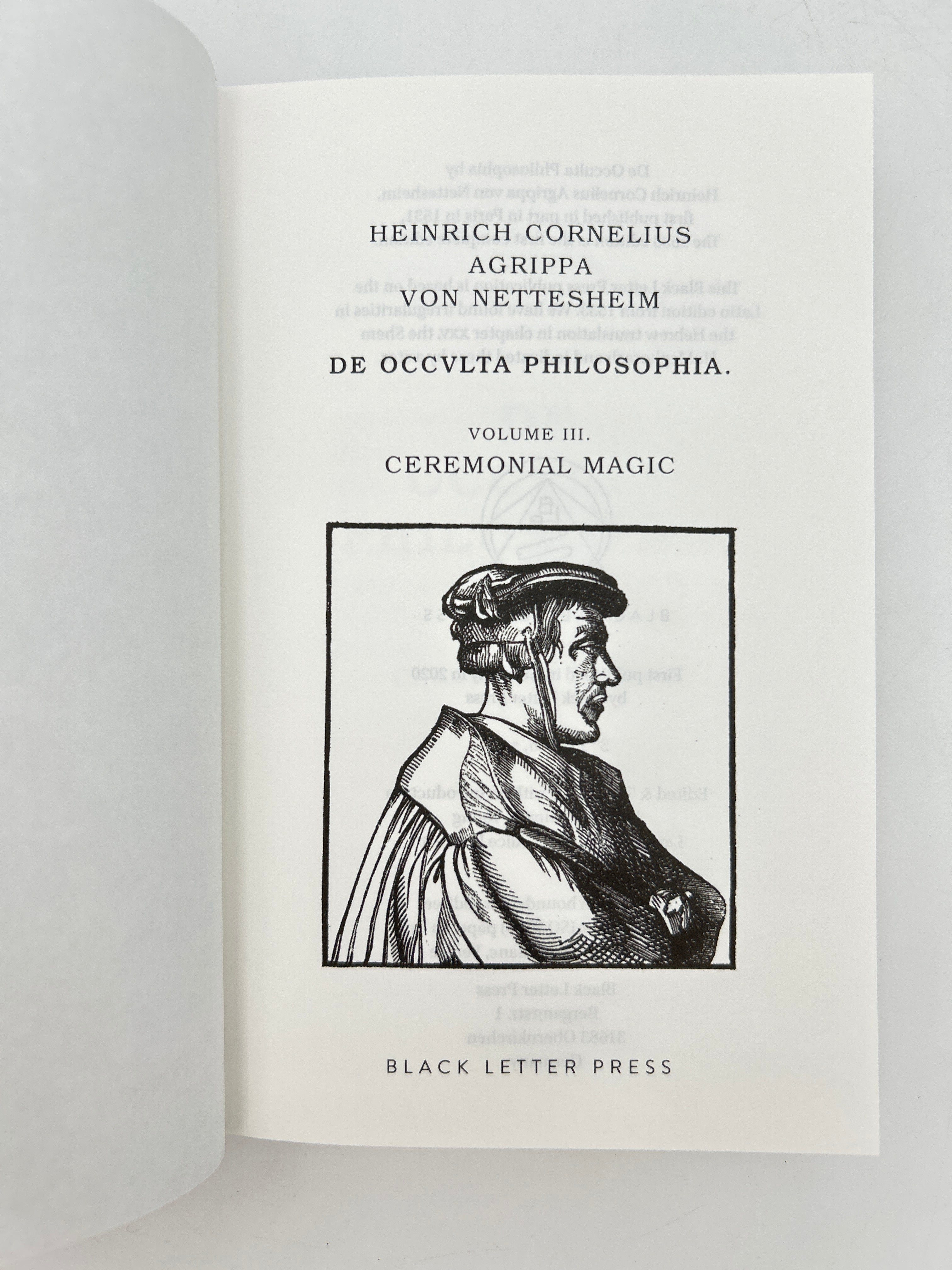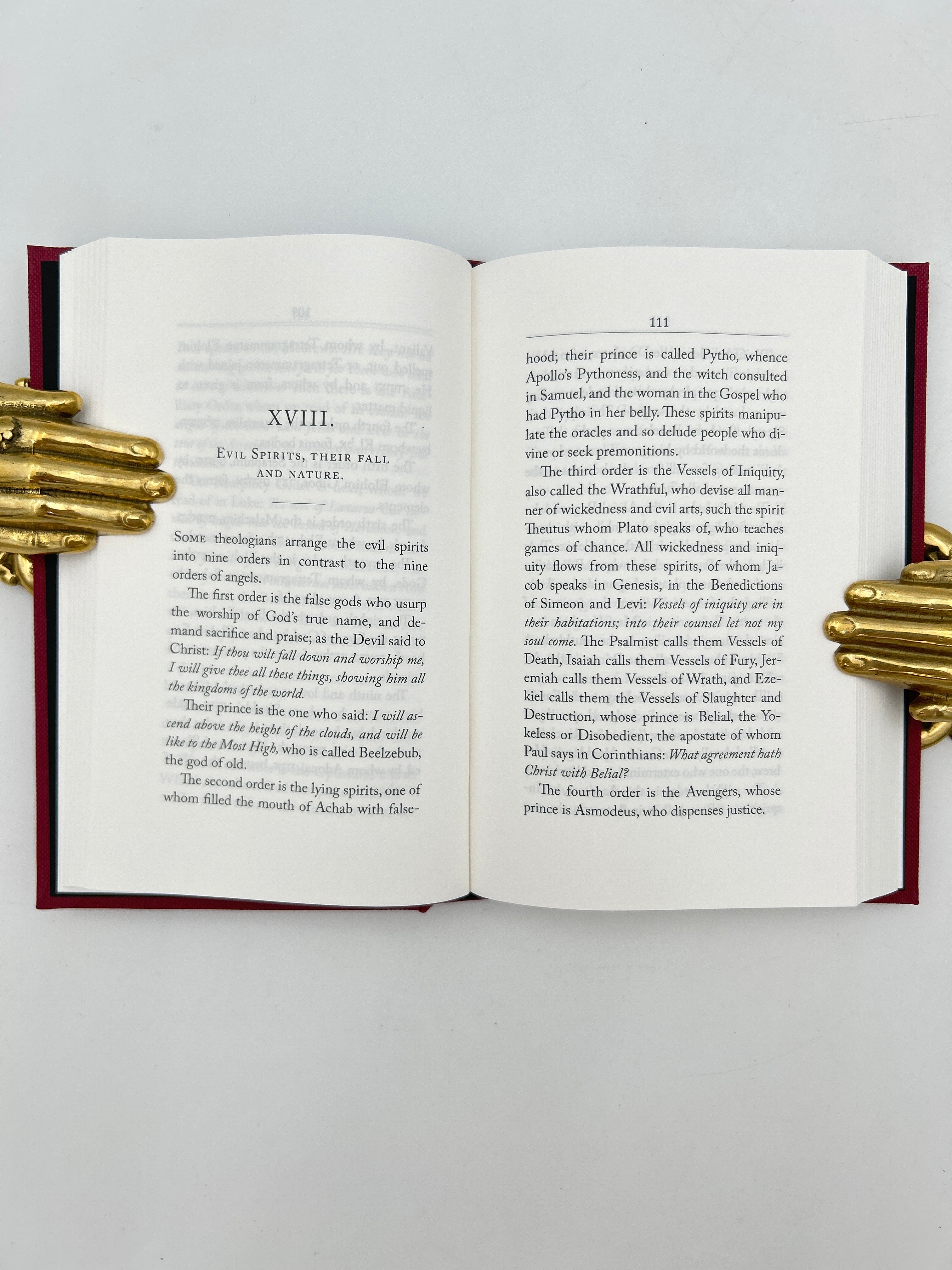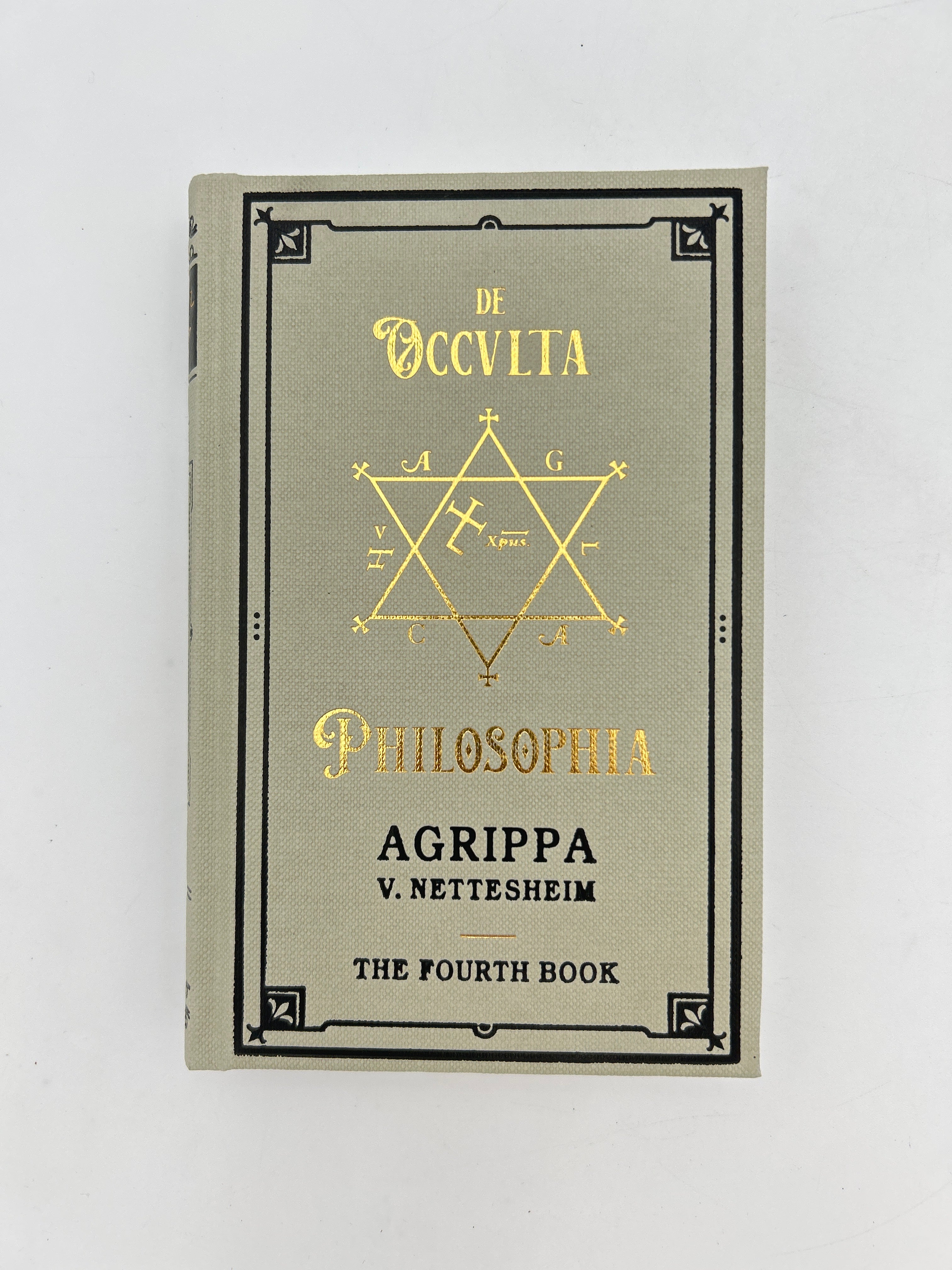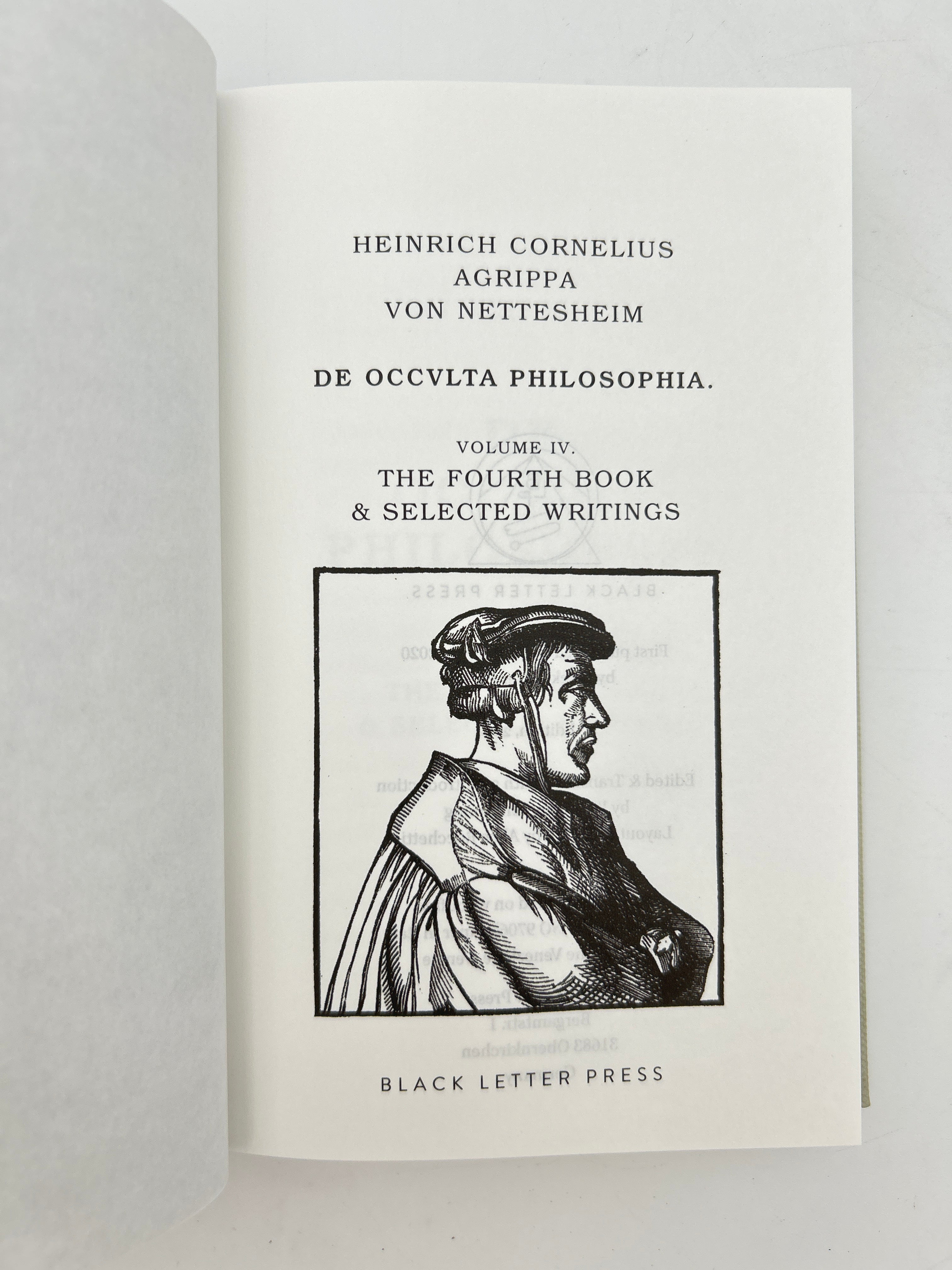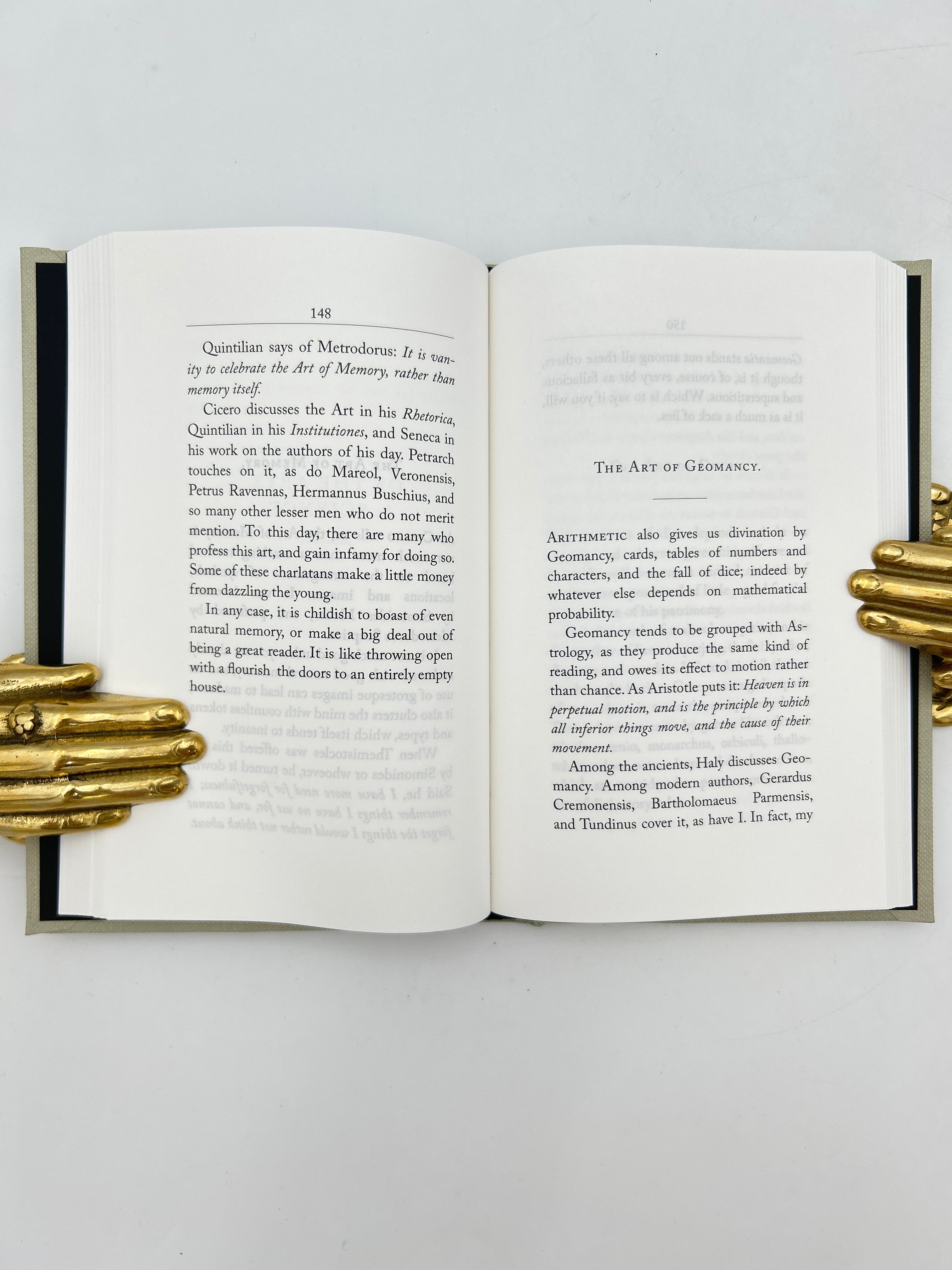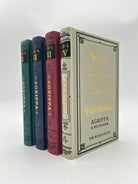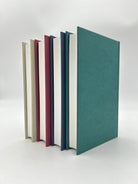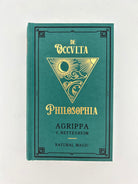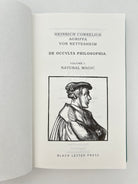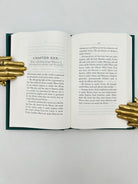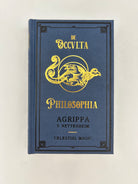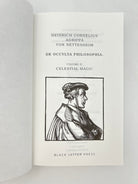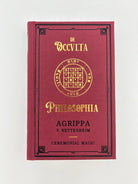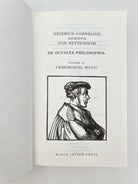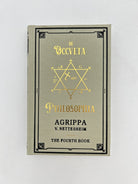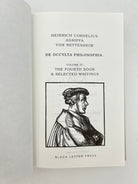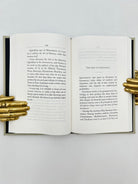De Occulta Philosophia Four Volume Set Grimoires
Couldn't load pickup availability
5b Heinrich Cornelius Agrippa. Translated by Paul Summers Young. Modern Reprint. ENGLISH.
Notes
De Occulta Philosophia, often published today as a four-book set, is a foundational text of Western esotericism that shaped the structure and theory of ceremonial magic for centuries. The first three books, written by Heinrich Cornelius Agrippa in the early 16th century, systematically present natural magic, celestial influences, and divine or ceremonial magic within a Christian-Neoplatonic and Hermetic framework. These volumes elevate magic as a spiritual and philosophical pursuit grounded in the hidden laws of nature and divine order. The so-called Fourth Book, of disputed authorship and likely written posthumously by another hand, shifts focus to practical ritual magic, offering detailed instructions on summoning spirits and using magical tools. Though not part of Agrippa’s authentic trilogy, it has become a lasting companion piece in occult literature. Together, the four volumes represent a bridge between medieval magical traditions and the Renaissance quest to harmonize faith, reason, and the occult sciences.
The first volume of De Occulta Philosophia focuses on natural magic, which Agrippa describes as the most fundamental and least dangerous form of magic, rooted in the hidden properties and sympathies found within nature. Drawing on ancient and medieval sources, he explores how herbs, stones, animals, colors, sounds, and numbers possess inherent virtues that can be manipulated to produce magical effects. This volume lays the philosophical and scientific groundwork for the rest of the work, positioning magic not as superstition, but as a noble and rational pursuit aligned with divine order. Agrippa emphasizes the idea that the natural world is a reflection of spiritual realities, and that the magician, by understanding these correspondences, can act in harmony with creation.
The second volume delves into celestial magic, which examines the influence of the stars, planets, and celestial spirits on the material world. Agrippa builds upon astrological and cosmological traditions to show how the heavens govern events on Earth, and how the magician can harness these forces through timing, talismans, and symbolic correspondences. This volume integrates astrology, numerology, music, and sacred geometry, treating the cosmos as an intricate system of divine order. The practitioner of celestial magic must understand the harmony between the macrocosm (the universe) and the microcosm (the human being), using this knowledge to draw down higher influences into earthly matter for magical or spiritual ends.
In the third volume, Agrippa explores ceremonial or divine magic, the highest and most controversial form of magic in his system. Here, he discusses the summoning of angels, the names of God, the virtues of sacred rituals, and the use of divine symbols such as Hebrew letters and angelic hierarchies. This volume merges Kabbalistic, Christian, and Hermetic traditions, emphasizing purification, spiritual discipline, and alignment with divine will. Ceremonial magic is not merely about power, but about ascending toward the divine through disciplined invocation and inner transformation. Agrippa presents this form of magic as a sacred science, requiring wisdom, moral purity, and deep theological understanding.
The so-called Volume IV of De Occulta Philosophia is widely believed to be apocryphal and was likely added posthumously by other authors. Unlike the deeply philosophical and theological tone of the first three volumes, this fourth book shifts toward practical, often folk-based magic, including recipes, spells, conjurations, and rituals for summoning spirits and achieving worldly results—such as love, wealth, or protection. It lacks the scholarly rigor and moral framework of Agrippa’s authenticated work, focusing instead on pragmatic magical operations. Nevertheless, it gained popularity for its more accessible and actionable content, and remains influential in magical circles, though its authorship and compatibility with Agrippa’s original vision are frequently debated.
Description
All four books bound in hardcover Fedrigoni Imitlin. Volume I Natural Magic in green. Volume II Celestial Magic in blue. Volume III Ceremonial Magic in maroon. Volume IV The Fourth Book & Selected Writings in cream. Printed on 115 g wood free, age resistant paper. Sewn Book Block. Black Bookmark and Headbands. Gilded on the front
